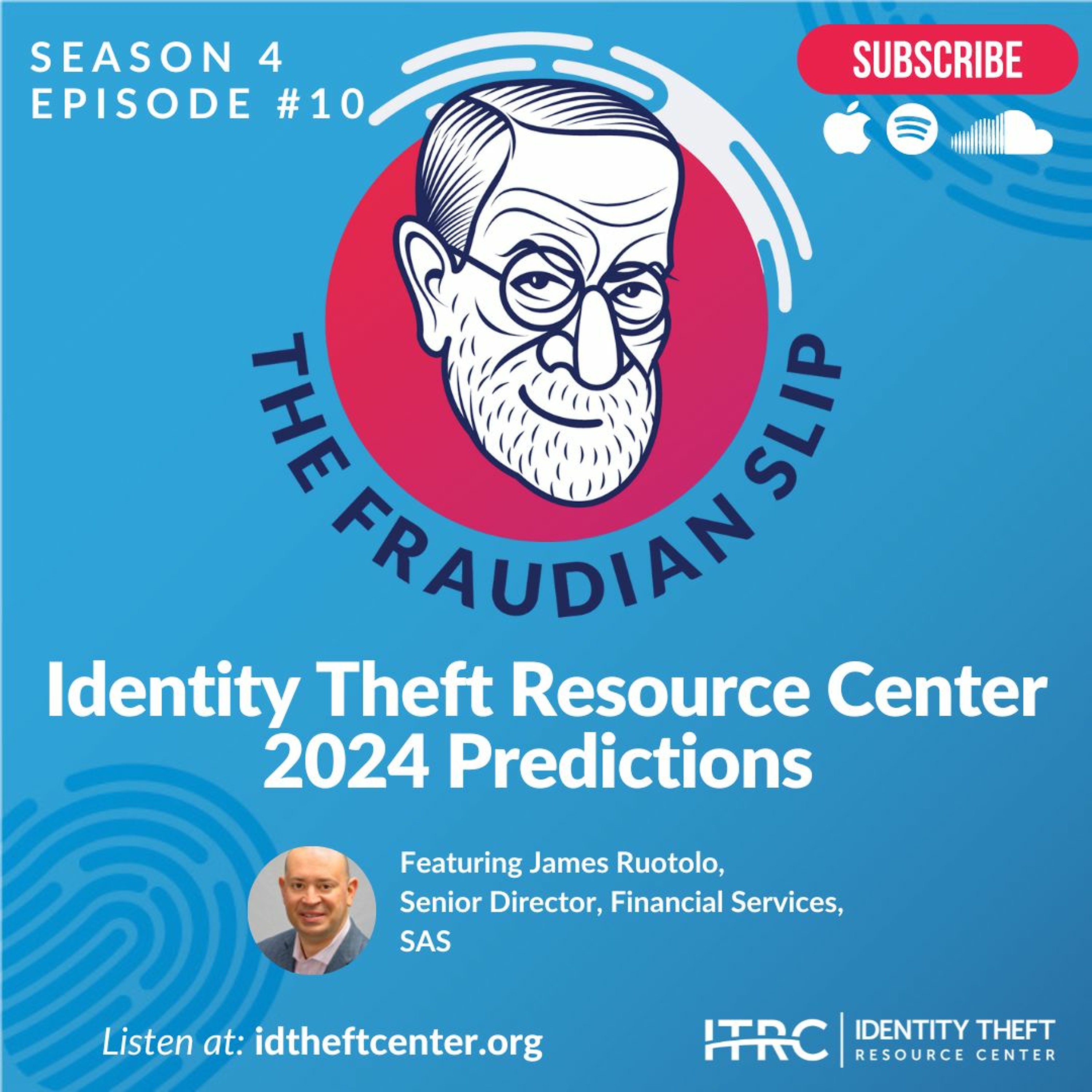Each week, we look at the most recent events and trends related to data security and privacy. Today, since it's Labor Day weekend, we're going back to school. This is not the recurring nightmare you have of waking up back in your high school biology class where you didn't do your homework and your lab partner ditched you, so you have to present the homework you did not do all alone…not that I have any personal knowledge of such a thing.
Show Notes
Follow on LinkedIn: www.linkedin.com/company/idtheftcenter/
Follow on Twitter: twitter.com/IDTheftCenter
Show Transcript
Welcome to the Identity Theft Resource Center’s (ITRC) Weekly Breach Breakdown for September 1, 2023. Thanks to Sentilink for their support of the podcast and the ITRC. Each week, we look at the most recent events and trends related to data security and privacy. Since it is Labor Day weekend this week, we are returning to school. We will look at the question: What is artificial intelligence?
This is not the recurring nightmare you have of waking up back in your high school biology class where you didn’t do your homework and your lab partner ditched you, so you have to present the homework you did not do all alone. Not that any of us have any personal knowledge of such a thing. No, today’s class is about artificial intelligence.
We’re not going to talk about any particular product or how McKinsey projects artificial intelligence will be a $4 trillion boost to global economic productivity. Instead, get out your vocabulary list because we will go over some of the terms you need to know to understand what artificial intelligence is and is not. Today’s lesson will help you sound smart at your next cocktail party or family gathering.
What is Artificial Intelligence?
Today’s definitions are courtesy of CNET; you can review their full glossary of terms on their website. Let’s start with the basics.
- Artificial intelligence, or AI – also known as Cognitive Computing: The use of technology to simulate human intelligence, either in computer programs or robotics.
- Algorithm: A series of instructions that allows a computer program to learn and analyze data in a particular way, such as recognizing patterns, to then learn from it and accomplish tasks on its own.
- Anthropomorphism: When humans give nonhuman objects human-like characteristics. In artificial intelligence, this can include believing a chatbot is more human-like and aware than it actually is, like believing it’s happy, sad or even sentient.
- Bias: This involves errors resulting from data used to train a program. This can result in falsely attributing characteristics to certain races or groups based on stereotypes.
- Generative Artificial Intelligence: A content-generating technology that uses artificial intelligence to create text, video, computer code or images. The artificial intelligence is fed large amounts of training data and finds patterns to generate its own new responses, which can sometimes be similar to the source material.
- Hallucination: An incorrect response from artificial intelligence, but stated with confidence as if correct. The reasons for this aren’t entirely known. Like some humans, artificial intelligence can often be wrong, but never in doubt.
- Large Language Model, or LLM: An artificial intelligence model trained on mass amounts of text data – like the content posted to the internet or certain software platforms – to understand language and generate new content in human-like language.
- Stochastic Parrot: An analogy that illustrates artificial intelligence software doesn’t have a larger understanding of the meaning behind language or the world around it, regardless of how convincing it sounds. The phrase refers to how a parrot can mimic human words without understanding the meaning behind them.
Why We Should Understand Artificial Intelligence
You get bonus points if you use Stochastic Parrot with that crazy uncle who believes Back to the Future is a documentary.
Long-time listeners have heard us say this before when discussing what is artificial intelligence. Like all technology, artificial technology is agnostic, while the users are not. We owe it to ourselves to learn what these new tech tools do and do not do if we are to take advantage of their benefits and protect against their capacity for mischief.
Contact the ITRC
If you want to know more about how to protect your business or personal information, or if you think you have been the victim of an identity crime, you can speak with an expert ITRC advisor on the phone, chat live on the web, or exchange emails during our normal business hours (Monday-Friday, 6 a.m.-5 p.m. PST). Just visit www.idtheftcenter.org to get started.
Thanks again to Sentilink for their support of the ITRC and this podcast. Be sure to check out the latest episode of our sister podcast, The Fraudian Slip, where we break down the findings from our annual report on how identity crimes impacted consumers in the past year. You can download the report by visiting www.idtheftcenter.org/publications.
We will return next week with another episode of the Weekly Breach Breakdown.
Listen On
Also In Season 4
-

The Fraudian Slip Podcast ITRC - 2024 Predictions
Welcome to the Fraudian Slip…the Identity Theft Resource Center’s podcast where -

The Weekly Breach Breakdown Podcast by ITRC - NameDrop and Roll - S4E34
Welcome to the Identity Theft Resource Center’s Weekly Breach Breakdown for Dece -

The Fraudian Slip Podcast ITRC - Takeaways from the ITRC Biometric Working Group Discussion Paper
Welcome to the Fraudian Slip…the Identity Theft Resource Center’s podcast, where -

The Weekly Breach Breakdown Podcast by ITRC - Bad News travels Fast - S4E33
Welcome to the Identity Theft Resource Center's Weekly Breach Breakdown for Nove
